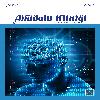Nebulize magnezyum sülfatın çocuklarda astım atakları üzerine etkisi
Adrenerjk beta-2 agonistler, astım, astım krizi, çocuk, inhalerler, magnezyum sülfat
The effect of nebulized magnesium sulfate on asthma attacks in the children
Adrenergic beta-2 agonists, asthma, asthmatic crisis, child, inhalers, magnesium sulfate,
___
- Daengsuwan T, Watanatham S. A comparative pilot study of the efficacy and safety of nebulized magnesium sulfate and intravenous magnesium sulfate in children with severe acute asthma. Asian Pac J Allergy Immunol. 2017;35(2):108-12.
- Mohammed S, Goodacre S. Intravenous and nebulised magnesium sulphate for acute asthma: systematic review and meta-analysis. Emerg Med J. 2007;24(12):823-30.
- Knightly R, Milan SJ, Hughes R, et al. Inhaled magnesium sulfate in the treatment of acute asthma. Cochrane Database Syst Rev. 2017;11(11):CD003898.
- GIF Asthma. Global strategy for asthma management and prevention. Global Initiative for Asthma; 2015. Access date: 08.10.2022. Available from: https://ginasthma.org/wp-content/uploads/2016/01/GINA_Report_2015_Aug11-1.pdf.
- Goodacre S, Cohen J, Bradburn M, et al. Intravenous or nebulised magnesium sulphate versus standard therapy for severe acute asthma (3Mg trial): a double-blind, randomised controlled trial. Lancet Respir Med. 2013;1(4):293-300.
- Singh AK, Gaur S, Kumar R. A randomized controlled trial of intravenous magnesium sulphate as an adjunct to standard therapy in acute severe asthma. Iran J. Allergy. Asthma Immunol. 2008;7(4):221-9.
- Kew KM, Kirtchuk L, Michell CI. Intravenous magnesium sulfate for treating adults with acute asthma in the emergency department. Cochrane Database Syst Rev. 2014;(5):CD010909.
- Schulz KF, Altman DG, Moher D; CONSORT Group. CONSORT 2010 statement: updated guidelines for reporting parallel group randomised trials. Int J Surg 2011;9:672–7.
- Chalut DS, Ducharme FM, Davis GM. The Preschool Respiratory Assessment Measure (PRAM): a responsive index of acute asthma severity. J Pediatr. 2000;137(6):762-8.
- Classen H; Jacob R; Schimatschek H. Interactions of Magnesium with Direct and Indirect Acting Sympathomimetic Amines. Magnesium. 1987;9:80-7.
- Middleton E Jr. Antiasthmatic drug therapy and calcium ions: review of pathogenesis and role of calcium. J Pharm Sci. 1980;69(2):243-51.
- Hill J, Britton J. Dose-response relationship and time-course of the effect of inhaled magnesium sulphate on airflow in normal and asthmatic subjects. Br J Clin Pharmacol. 1995;40(6):539-44.
- Iseri LT, French JH. Magnesium: nature’s physiologic calcium blocker. Am Heart J. 1984;108(1):188-93.
- Nannini LJ Jr, Pendino JC, Corna RA, Mannarino S, Quispe R. Magnesium sulfate as a vehicle for nebulized salbutamol in acute asthma. Am J Med. 2000;108(3):193-7.
- Mahajan P, Haritos D, Rosenberg N, Thomas R. Comparison of nebulized magnesium sulfate plus albuterol to nebulized albuterol plus saline in children with acute exacerbations of mild to moderate asthma. J Emerg Med. 2004;27(1):21-5.
- Aggarwal P, Sharad S, Handa R, Dwiwedi SN, Irshad M. Comparison of nebulised magnesium sulphate and salbutamol combined with salbutamol alone in the treatment of acute bronchial asthma: a randomised study. Emerg Med J. 2006;23(5):358-62.
- National Institutes of Health. Global strategy for asthma management and prevention [updated 2005]. Access date: 25.10. 2022. Available from: www.ginasthma.org.
- Ducharme FM, Davis GM. Measurement of respiratory resistance in the emergency department: feasibility in young children with acute asthma. Chest. 1997;111(6):1519-25.
- Gorelick MH, Stevens MW, Schultz TR, Scribano PV. Performance of a novel clinical score, the Pediatric Asthma Severity Score (PASS), in the evaluation of acute asthma. Acad Emerg Med. 2004;11(1):10-8.
- Canny GJ, Reisman J, Healy R, et al. Acute asthma: observations regarding the management of a pediatric emergency room. Pediatrics. 1989;83(4):507-12.
- Birken CS, Parkin PC, Macarthur C. Asthma severity scores for preschoolers displayed weaknesses in reliability, validity, and responsiveness. J Clin Epidemiol. 2004;57(11):1177-81.
- ISSN: 2149-5254
- Yayın Aralığı: Yılda 3 Sayı
- Başlangıç: 1933
- Yayıncı: Hayat Sağlık ve Sosyal Hizmetler Vakfı
Nebulize magnezyum sülfatın çocuklarda astım atakları üzerine etkisi
Mehmet ASLAN, Hilal KARABAĞ ÇITLAK, Erdem TOPAL, Harika GÖZÜKARA BAĞ, Fatih KAPLAN
Begum Busra CEVVAL OZKOCAK, Merve AĞACCIOĞLU, Fatma AYTAÇ BAL
Mehmet CANLEBLEBİCİ, Canan DEMİRCİ
Aksiyal spondiloartritli hastalarda D vitamini eksikliğinin yorgunluk ve depresyon üzerine etkisi
Esma DEMİRHAN, Sevgi ATAR, Muhammed Bilal ÖZDEMİR, Ömer KURU
Maksillofasiyal cerrahiden sonra gelişen postoperatif bulantı kusma için risk faktörleri
Alanur ÇİFTÇİ ŞİŞMAN, Hazal İrem ÇİFTÇİ, Necip Fazıl ERDEM
Otomozal dominant polikistik böbrek hastalığında tolvaptan kullanımı: Tek merkez deneyimi
Cebrail KARACA, Mevlut Tamer DİNCER
Murat GÜL, Sinan İNCİ, Halil AKTAŞ
Rıza Gökçer TULACI, Hasan ÇANAKCI
Çocukluk çağında levotiroksin zehirlenmesi – gerçekten korkmalı mıyız?
Betül ÖZTÜRK, İlknur BODUR, Aysun TEKELİ, Ali GÜNGÖR, Raziye Merve YARADILMIŞ, Muhammed Mustafa GÜNEYLİOĞLU, Aytaç GÖKTUĞ, Nilden TUYGUN, Can Demir KARACAN
